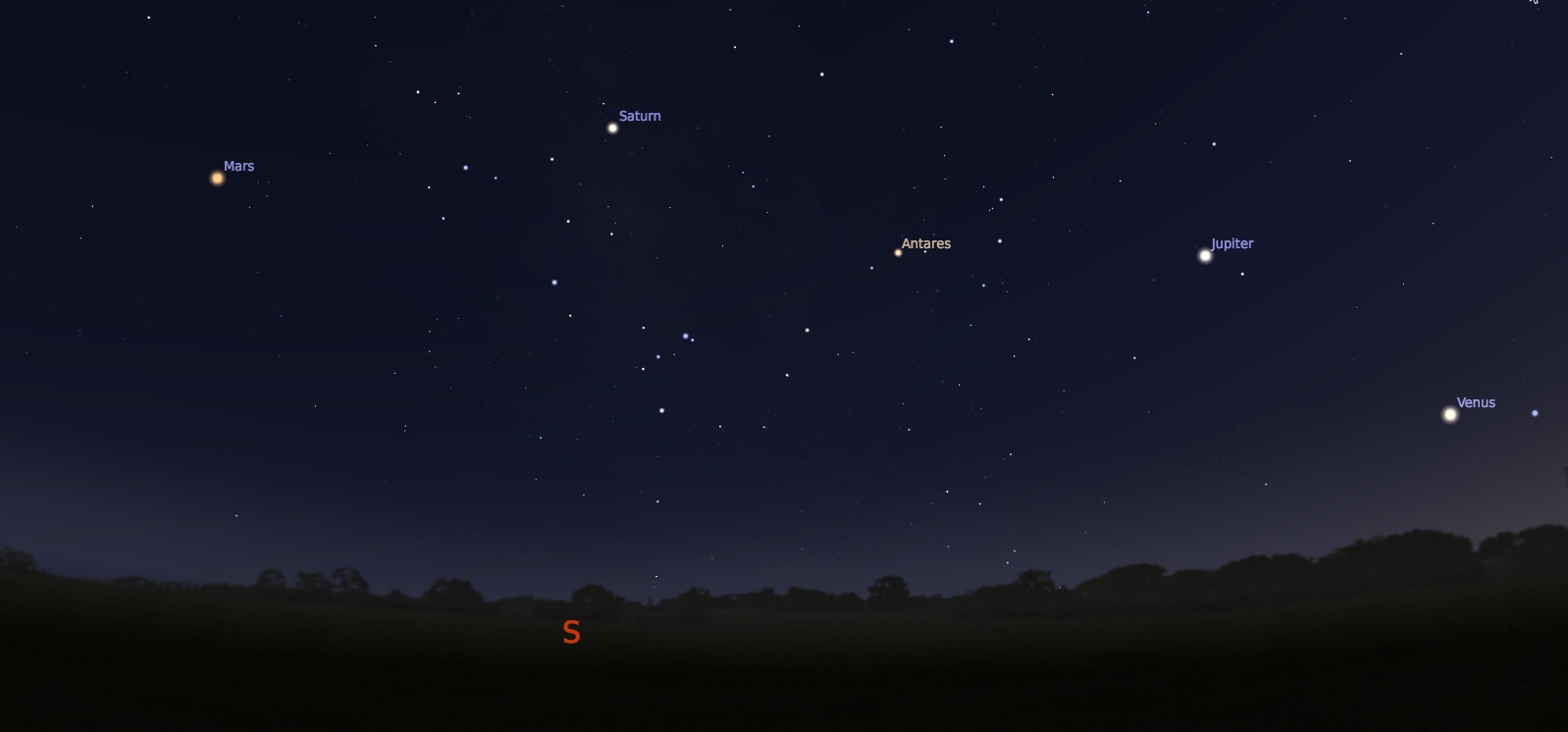By Joe Khalaf, Vice President and Outreach Chairperson – Houston Astronomical Society
Welcome to the first edition of What’s Up, Houston. This will be a monthly article to highlight some of the neat things those of us living in the Houston area can see by simply looking up. Some of these items will require “looking up” with binoculars or a telescope for the best views, so if you don’t own either of those, be sure to look for an upcoming outreach event by the Houston Astronomical Society to try and catch a glimpse of what the heavens above have to offer.
Planet-Palooza
Though we’ve passed opposition for Mars, Jupiter, and Saturn, September is still a great time to observe these planets during the evening and night times. For those who don’t know, opposition is when a planet with an orbit further away from the sun than ours (basically, every planet except Mercury and Venus), happens to lie on the opposite side of the sky from the sun. This also happens to coincide closely to the closest approach that planet has to earth. Subsequently, these planets appear biggest and brightest around these times. These three planets, as well as Venus, make for a great set of targets for telescopes and binoculars.
Venus
Looking west/southwest, bright Venus lingers over the horizon for about an hour after sunset, then sets for the rest of the night. Because Venus is an “inferior” planet (i.e., its orbit lies between the earth’s orbit and the sun), it’s shape often mimics that of the moon – with multiple phases, including thing crescents and “half” Venuses.
As seen from Houston on September 7, 2018 @ 7:00PM Image courtesy of Stellarium
Jupiter
Moving to the east, we run across Jupiter – king of the planets. Even a modest pair of binoculars can reveal up to four Jovian moons, but through a telescope is where Jupiter really shines. Dynamic Jupiter often revels great atmospheric features, including several colors bands and storms, but keep an eye out for any shadows being cast on the upper cloud layers by transiting moons.
Saturn
Move further east and we run across Saturn. Through a telescope, we see Saturn’s rings facing us favorably for observations. The rings always look Those with a big enough telescope and good conditions should be able to see the Cassini Division, a dark line separating the outermost large A ring and the inner B ring.
Mars
Lastly, as we move even further east, we see ruddy, orange Mars hanging like a beacon in the night. This most recent Mars opposition brought the red planet closer to the earth than it’s been since 2003, and it won’t be as close as it was then until the 2035 opposition.
While Mars has certainly shrunk a bit from that opposition back at the end of June, it’s still a great time to go out and observe the planet. During opposition, a global dust storm engulfed Mars, making it difficult – if not impossible – to see any surface features. Well, that storm has died down a bit and making out surface features, such as the polar ice caps, Valles Marineris – one of the longest and deepest canyons in the solar system, and Mons Olympus – the tallest volcano in our solar system.
That’s just a small sample of what’s up in Houston this month. If you get a chance, head outside and look up, or even better, join the Houston Astronomical Society at a public outreach event and take a look through our telescopes. Until then, may you have clear skies!



